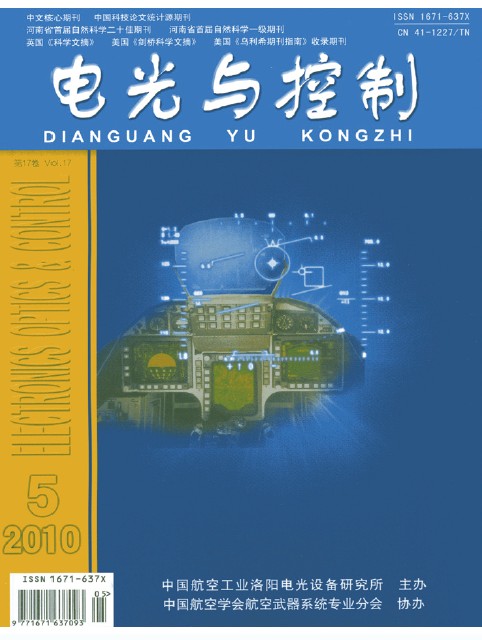 View fulltext
View fulltext
Compared with a single Unmanned Aerial Vehicles (UAV)the UAV formation of has a better overall performance in cooperative detectionreconnaissance or combat.The task execution lifecycle of UAV formation is divided into six stagesincluding formation formingformation flying toward the task areaformation reconfiguration while flying toward the task areaformation reconfiguration while performing tasks in the task areaformation return and formation dissolution.These six stages are summarized in three key technical issues including formation rendezvousformation keeping and formation reconfiguration.The current situation of study on them is discussed and analyzed respectively.Finallythe future development challenges and research tendency are proposed.
Considering low accuracy even divergence of maneuvering target tracking due to inaccurate tracking model and uncertain statistical propertywe proposed an adaptive Square Root Cubature Kalman Filter (SCKF) based on the standard SCKF and modified SageHusa estimator.The proposed algorithm can estimate the statistical parameters of unknown system noises onlineand restrain the tracking error caused by unknown system noises effectively;hence it is applied to maneuvering target tracking.The simulation results show that:comparing with SCKF algorithm,the adaptive SCKF can provide better accuracy and stability for maneuvering target tracking when the unknown or time variant system noises is some different from the prior noise knowledge.
The firing range of extended range and trajectory correction projectile is the key factor for the projectile to achieve simultaneous impact. In order to study the influence of time control parameter to the firing rangewe established a compound extended range particle trajectory modeland analyzed the influence of the time control parameterssuch as rocket firing time and drag ring openloop timeto the firing range by using digital simulation method. Further morethe fitting functions were established for the influences.A quantitative description method was presented for extended range and trajectory correction projectile to achieve simultaneous impactwhich has important application and reference value.
Threat assessment for the electronic warfare (EW) targets is very important for EW combat decision making.In order to deal with the imprecision and uncertainty of factors relative to EW targets during threat assessmenta multiattribute and group decisionmaking threat assessment model was set upwhich focused on the selection and determination of threat assessment indexes.Based on the scale quantitative functionthe qualitative indexes were quantified.Then the compromise ranking methodVIKORwas used to sort the threat targetsthus to made the overall utility maximum and individual regret minimum.Finallythe effectiveness of threat assessment model and the feasibility of the algorithm were proved through the threat assessment simulated on the supposed view of an EW.
In view of the high computational complexity of the existing joint target tracking and classification (JTC) algorithmwhich has neither closed form nor modular structurewe united the models of all predicted target types to form a global multimodel set.Thenwe proposed a joint target tracking and classification algorithm based on global multiplemodel(GMMJTC) by applying Bayes rule to the target state probability density function and target class probability mass function simultaneously under the assumption that the kinematic and attribute measurement processes are conditional independent.The GMMJTC algorithmwhich consists of a Kalman global multiplemodel filter and a Bayesian classifierhas a closed form with a modularized structuretogether with a lower computational complexity.Its more suitable for realtime applications.The simulation results confirm the effectiveness of the proposed GMMJTC algorithm.
Traditional approach and landing guidance equipments are difficult to meet the urgent needs due to their poor flexibility.Thereforewe studied the continuous navigation project based on DGPS/SINS tight integration according to airplanes requirement to the navigation parameters in the process of approach and landing.In the condition of good GPS signalthrough building up difference base station and transmitting observation data such as pseudorange to rover stationthe DGPS and GPS/SINS tight integration algorithm was processed in receiver terminal.In the case of no satellite signalthe velocity information from SINS was used as observation for dead reckoning the relative positionand the navigation parameters needed for landing were acquired.The experiment results indicate that this method can obtain continuous relative positionvelocity and attitude with high accuracy for airplane approach and landingwhich is useful for practical application.
The sharedaperture thinned interleaved arrays design technology is an important infrastructure of integrated sensor system (ISS).It can reduce the quantity of antennassave spaceand reduce the loads and manufacture costs.The shared aperture interleaved arrays based on difference sets usually have high sidelobe levelsbecause of the asymmetric distribution of the thinned subarrays elements.A method of optimized interleaved arrays was proposed based on difference sets and genetic algorithm.Firstthe difference sets were used to determine the position of array elementsand the current magnitude distribution of arrays was taken as the decisionmaking variable.The genetic algorithm was used to lower the maximum sidelobe levelthus to improve the performance of the whole shared aperture interleaved arrays.The simulation results show that the method is effective to restrain the sidelobe levels and useful for interleaved array optimization.
The airborne multiinput multioutput synthetic aperture radar (MIMOSAR) may have spacevariant range error while enlarging the illuminated areathus result in various imaging error for the existing algorithms applied to the large scale model.This paper presents a theoretical analysis based on the sidelooking modeland the analysis shows that under the widen swaththe mismatch between the echo signal and the reference function is the main factor of the imaging error.So an algorithm of highprecisionlarge region imaging was proposedwhich was verified by the results of simulation.










